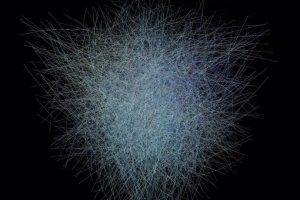The proliferation of microplastics, particularly microfibers, in the sludge generated during wastewater treatment represents a major environmental problem due to its persistence and possible health risks. Unfortunately, the detection methods currently used are labor-intensive and have several limitations.
A team from the Valencian University Institute for Research in Artificial Intelligence (VRAIN) and the University Institute of Industrial, Radiophysical and Environmental Safety (ISIRYM), both from the Polytechnic University of Valencia (UPV) in Spain, has developed an application that allows identifying and quantify plastic microfragments contained in water currents and sludge from urban wastewater treatment plants, through image processing with artificial intelligence. Specifically, this prototype uses advanced techniques from the artificial intelligence modality known as deep learning.
The application, available for Windows, allows you to import images of samples prepared on different supports and obtained with a stereomicroscope. The images are processed and the application locates the microfiber in the image.
Additionally, a breakdown is obtained per image, which contains the number of fibers contained in said image, the color of the corresponding fiber, and its length in micrometers.
The advantages of the new application are obvious. UPV VRAIN researcher César Ferri explains that “using convolutional neural networks we have developed a system that allows us to identify and locate microfibers with superior performance compared to the techniques currently used. Additionally, our system significantly reduces manual effort and processing time.”
Artistic recreation of the concept of cataloging plastic waste using artificial intelligence. (Image: Amazings/NCYT)
The objective when designing this application is to offer a detailed analysis of the microfibers present in samples of water and waste sludge to operating companies in this sector, so that they can obtain this data quickly and reliably.
The study is signed by Félix Martí, César Ferri and Carlos Montserrat from the VRAIN of the UPV, as well as Ana Domínguez, María José Luján, Eva Ferrer, Amparo Bes and José Antonio Mendoza from the ISIRYM of the UPV. (Source: Polytechnic University of Valencia)






![[Img #74675]](https://thelatestnews.world/wp-content/uploads/2024/12/They-discover-a-new-class-of-X-ray-sources-in-the-150x150.jpg)





![[Img #74319]](https://thelatestnews.world/wp-content/uploads/2024/11/Artificial-intelligence-against-microplastic-pollution.jpg)
![[Img #74675]](https://thelatestnews.world/wp-content/uploads/2024/12/They-discover-a-new-class-of-X-ray-sources-in-the-300x200.jpg)


Add Comment